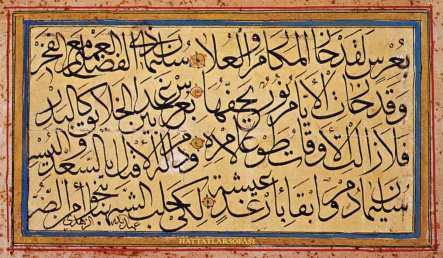As made evident by his extensive body of artistic works, Abdullah Zühdi’s mastery over the classical aesthetic categories of form, harmony, and proportion mean that he can be very accurately described as one of the greatest master calligraphers of the Ottoman period. Although prolific throughout his career, he is mostly known for the artistic contributions he made to the Ka‘ba and the mosque of the Prophet Muhammad in Medina, indisputably the two most sacred sites for Muslims the world over. Many of the distinguished inscriptions Zühdi prepared for the Prophet’s Mosque are still extant, and as attested by a number of objects held in the Khalili Collection, Zühdi’s calligraphic designs continued to inspire craftsmen and calligraphers long after his death in 1296/1879.
In this talk, Sami De Giosa will explore the biography of the illustrious nineteenth century master through a study of his life, style, major works, and transformative contributions towards the development of Ottoman calligraphy.


